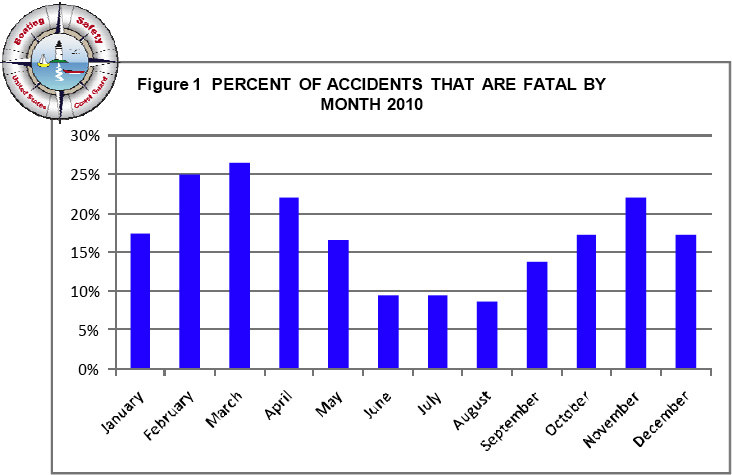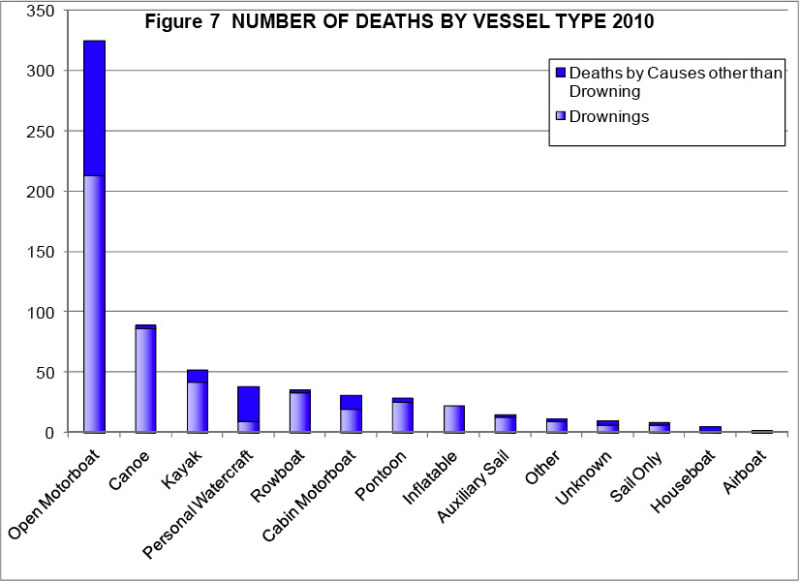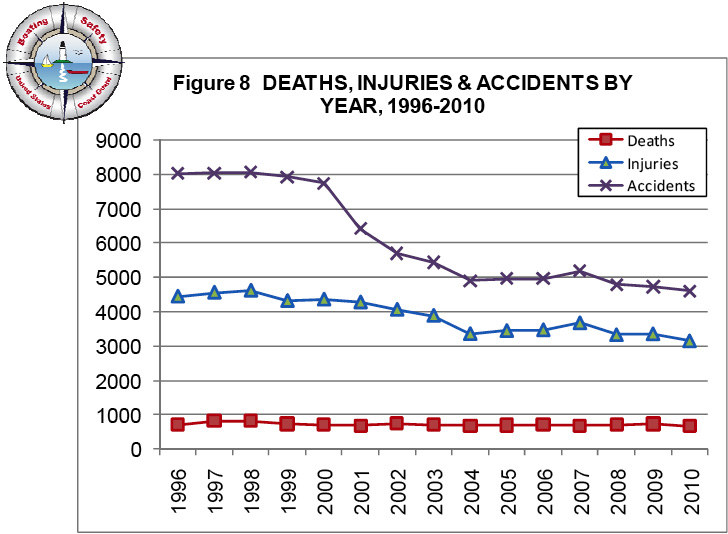
2010 Boating Stats Released
The U.S. Coast Guard have released their recreational boating statistics for 2010, which is always an illuminating read. For example, take a guess which month had the highest percentage of fatal accidents. Did you say July or August? You’d be wrong. According to the report, March, February and November had the highest percentages of fatal accidents — 26%, 25% and 22% respectively — while June through August had the lowest at 9% each. Ironically, July had the second highest number of fatalities, 118, but it also had the highest number of non-fatal accidents at 1,023.

But most of the statistics in the report were fairly unsurprising: Nearly half of the 672 fatal accidents last year occurred on open motorboats (325) — sailboats had only 23 — and boats that were under 26 feet (584); drowning was the most common cause of death (484; 395 of them were not wearing PFDs) and alcohol use was the most common contributing factor in fatal accidents (126); and 84% of all fatal accidents happened on boats operated by someone who had no boating instruction.

Here’s the executive summary of the report:
In 2010, the Coast Guard counted 4604 accidents that involved 672 deaths,
3153 injuries and approximately $35.5 million dollars of damage to property as a
result of recreational boating accidents.
• The fatality rate was 5.4 deaths per 100,000 registered recreational vessels. This rate represents a 6.9% decrease from last year’s fatality rate of 5.8 deaths per 100,000 registered recreational vessels.
• Compared to 2009, the number of accidents decreased 2.66%, the number of deaths decreased 8.70% and the number of injuries decreased 6.10%.
• Almost three-fourths of all fatal boating accident victims drowned, and of those,
88% were not reported as wearing a life jacket.
• Only 9% of deaths occurred on boats where the operator had received boating safety instruction. Only 6% of deaths occurred on vessels where the operator had received boating safety instruction from a NASBLA-approved course provider.
• Eight out of every ten boaters who drowned were using vessels less than 21 feet in length.
• Operator inattention, improper lookout, operator inexperience, excessive speed, and alcohol rank as the top five primary contributing factors in accidents.
• Alcohol use is the leading contributing factor in fatal boating accidents; it was listed as the leading factor in 19% of the deaths.
• Twenty-one children under age thirteen lost their lives while boating in 2010. 42% of the children who died in 2010 died from drowning. 44% of those who drowned were wearing a life jacket even though only half of them were required to do so by state law.
• The most common types of vessels involved in reported accidents were open motorboats (46%), personal watercraft (20%), and cabin motorboats (14%).
• The 12,438,926 recreational vessels registered by the states in 2010 represent a 2.2% decrease from last year when 12,721,541 recreational vessels were registered.

Of course reports like these don’t expound theories on why some boats are safer than others, so we’d like to hear your opinions on why sailboats have so many fewer fatal accidents. Is it simply that there are so many more registered powerboats than sailboats — 11.5 million to 260,000? Is it a matter of ‘speed kills’? Or does sailing require more education by its participants, thus making them inherently safer boaters?
